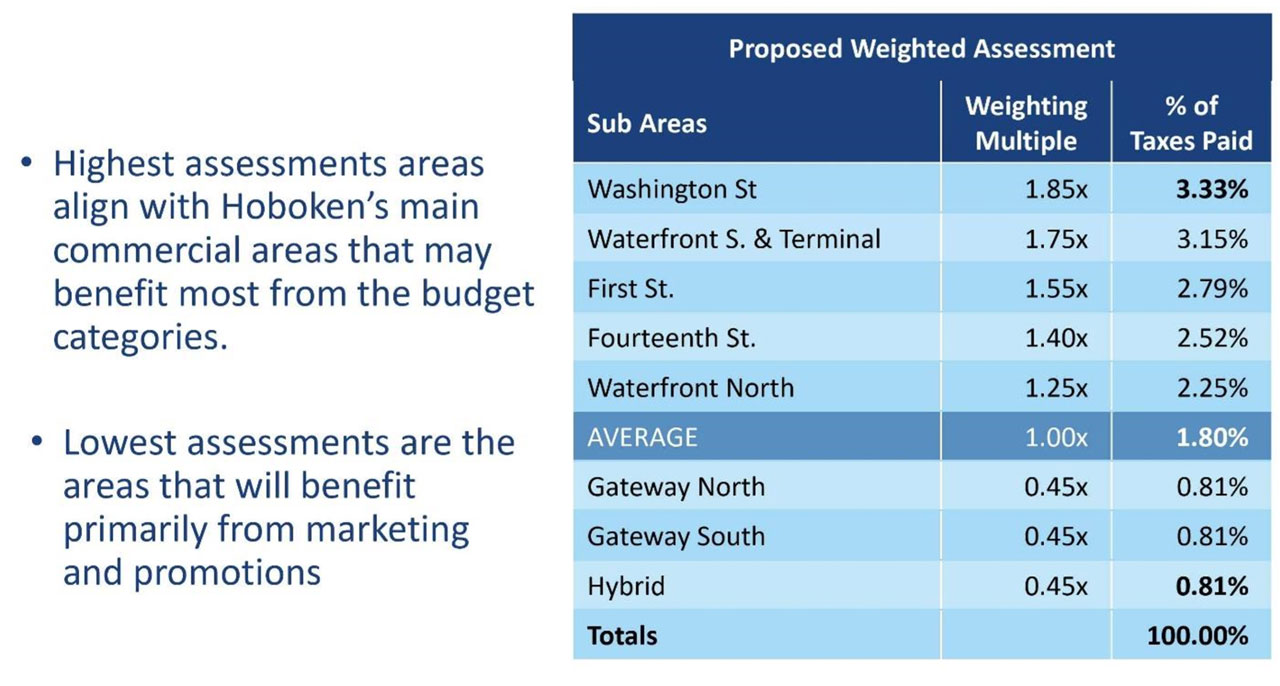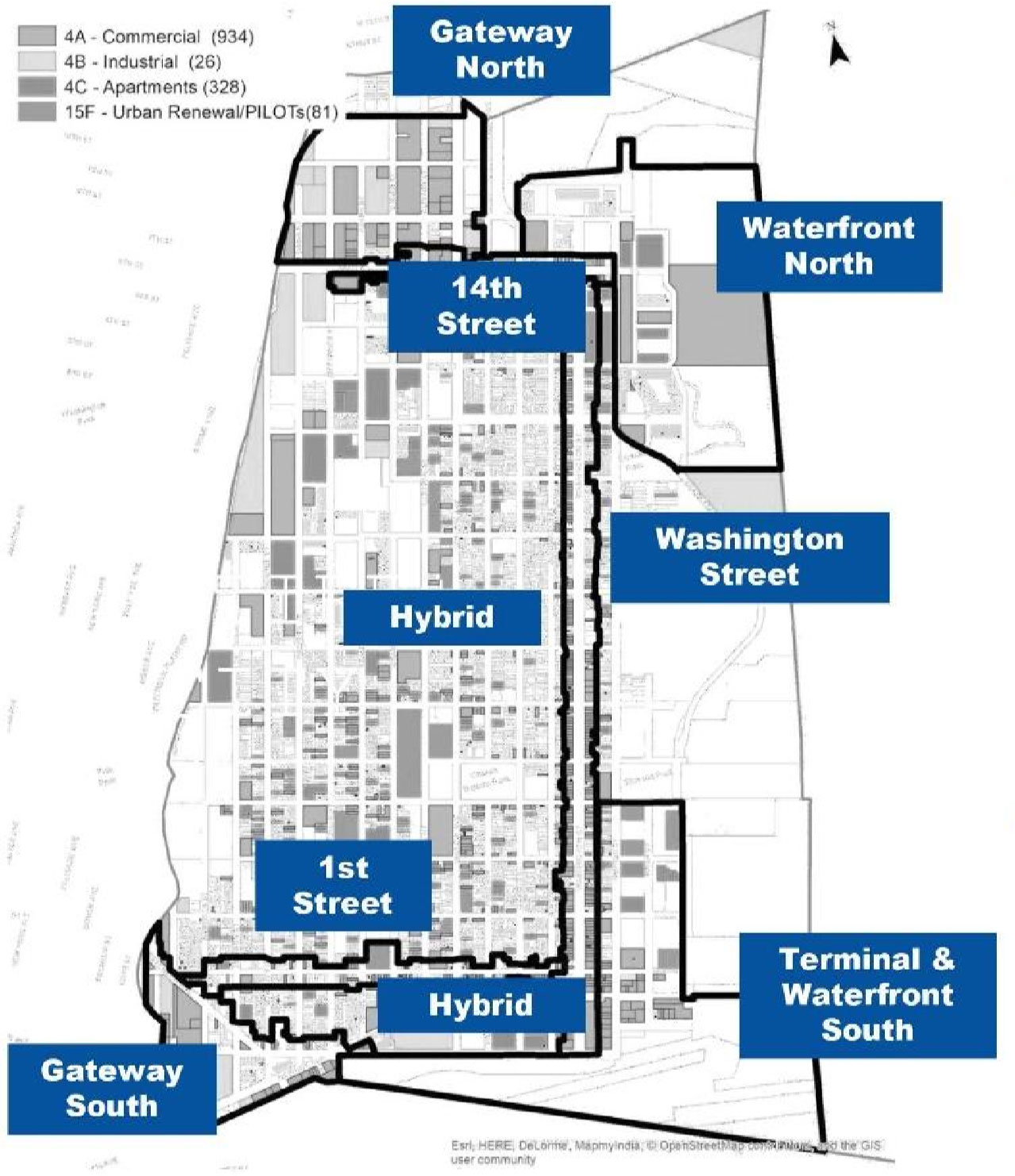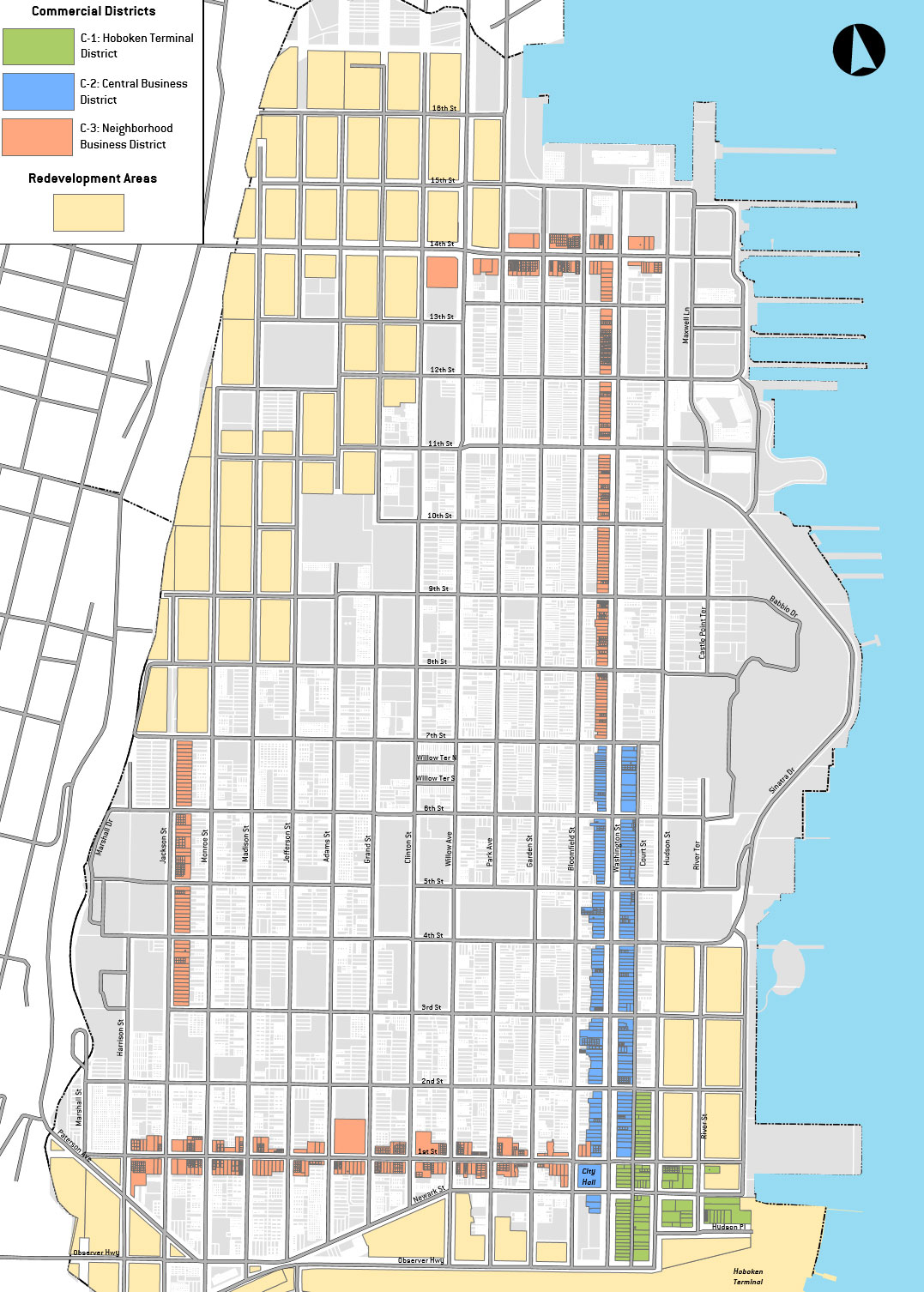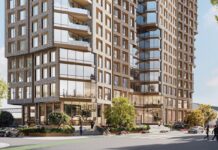
Specifics have become clearer on a plan to revamp the business climate of the Mile Square City, as the council recently heard a presentation about creating a city-wide Special Improvement District (SID) that would be paid for with a new assessment on commercial properties.
Jersey Digs first revealed the city’s intentions regarding the SID back in April and new details have emerged about how it could be implemented. Under the plan, a new SID District Management Corporation would be created and administered by a nonprofit management company known as the Hoboken Business Alliance Inc.
That entity would oversee city-wide programs under the SID focusing on maintenance, beautification, streetscaping, marketing, small business promotion, tourism, arts and events, and other initiatives designed to stimulate business within Hoboken. The SID would be funded by a new assessment on all commercial, industrial, and retail properties with rental units of five or more apartments.
Specifically, all commercial or mixed-use properties classified as 4A, 4B, and 4C under New Jersey’s Property Tax System Qualification Codes would have to pay into the SID. The assessment rate proposed would be a percentage of the total property taxes paid for each block and lot and the rate would depend on which zone within the city the land is located. Assessment sub-areas under the plan include Washington Street, South Waterfront/Terminal, First Street, Fourteenth Street, North Waterfront, North Gateway, South Gateway, and Hybrid/Remaining Properties.

Per the graphic, buildings within the Washington Street and South Waterfront sub-areas would pay the highest assessment rate into the SID, followed by property owners along First and Fourteenth Streets. While a report written by Ocean-based Economic Development Strategies recommends creating the SID, the city council still has to formally pass legislation enacting the suggestion for the plan to go into effect.

The possible creation of the SID follows last month’s revamp of outdated zoning along Hoboken’s retail corridors. Under old regulations, the city’s Central Business District ran from Washington Street’s southern end north to 4th Street, with the rest of the road being subject to what’s known as R-1 (or residential) zoning. As a result, buildings north of 4th Street had more restrictive regulations that required a business changing the use of an existing storefront (i.e. from a clothing store to a restaurant, for example) to gain approval from the city’s planning board.
The issue has come up repeatedly in recent years as several new restaurants, including Makai Poke Company, Jungle Juice Smoothie Bar, and the upcoming Muteki Ramen and Mango Mango Dessert, all had to go before the planning board before moving forward. That situation should now be a thing of the past as the Small Business Expansion District Plan, sponsored by 1st Ward Councilman Mike DeFusco and Councilman-at-Large Jim Doyle, was approved last month.
The scheme replaces the old regulations by dividing the city’s business district into three zones, all of which allow retail use. The first part of the overhaul establishes a C-1 Hoboken Terminal District that’s situated directly around the city’s major transit hub. The second move expands the former C-2 Central Business District that runs along Washington Street from Fourth Street to Seventh Street.

The final change creates the C-3 Neighborhood Business District, which expands retail zoning along Washington Street from Seventh through Fourteenth Streets excepting certain blocks on the eastern side. That new district also includes the entire length of First Street in addition to 14th Street from the waterfront to Willow Avenue.
The last portion of the C-3 district allows retail on Jackson Street between Third through Seventh Streets across from areas like Mama Johnson Field to serve the west side of Hoboken. Unlike the proposed SID, these new regulations have already taken effect.
Related:
- Hoboken Approves New Hilton Hotel Deal With $3.2 Million in Givebacks
- Brooklyn’s Caffe Buon Gusto Opening Hoboken Location
- NY Waterway, Hoboken Union Dry Dock Dispute Heads to Court


